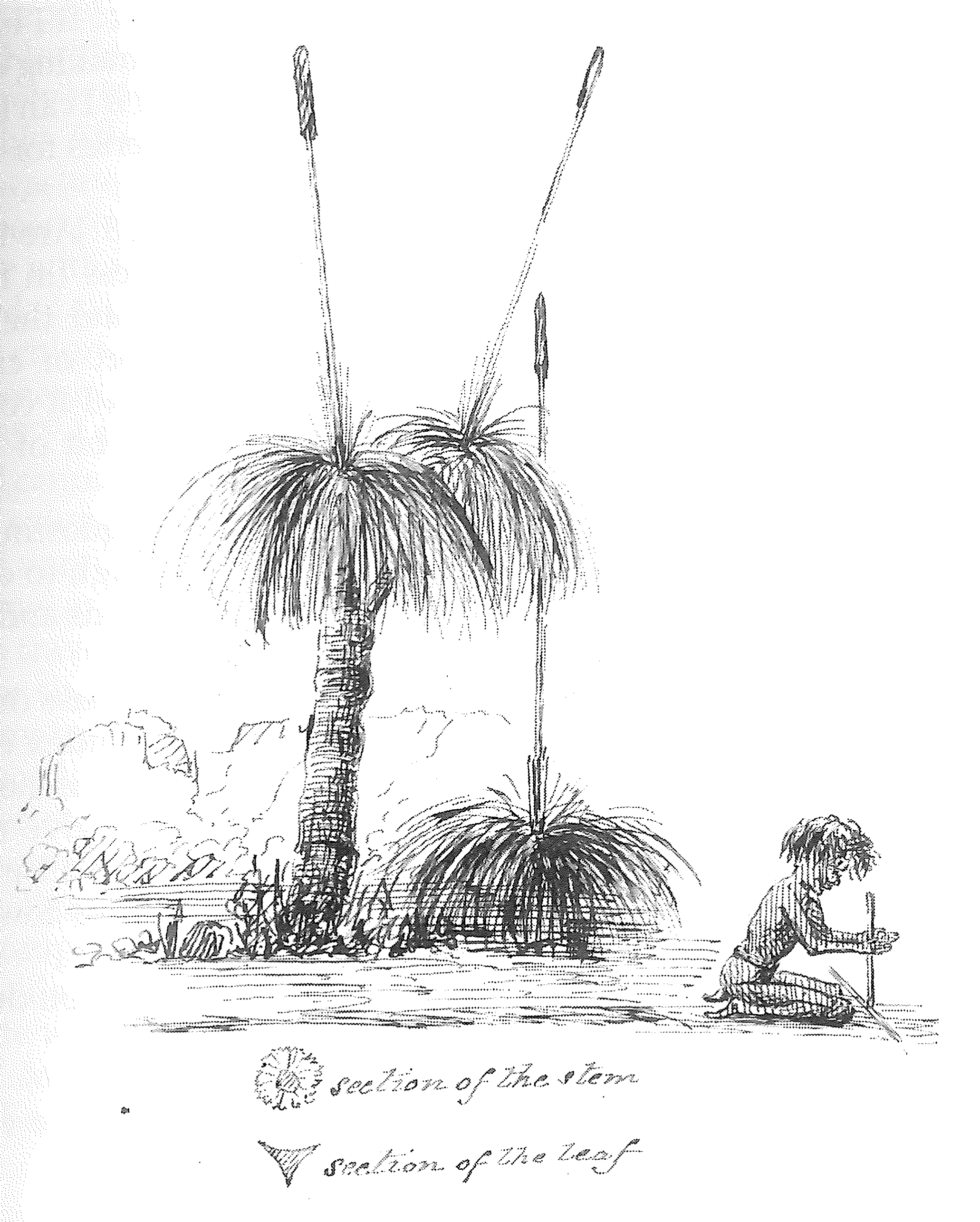John Frederick Mann to Faraday 19 January 18581
Bamfield Hill, Four Posts | Southampton | 19th January 1858
Sir
Many years ago I had the pleasure of attending some lectures delivered by you at the R.M. Academy Woolwich, at one of which you informed the audience that the way in which savage nations obtained fire was by rubbing two pieces of dry stick together; at the same time, to a certain extent, illustrating the same by rubbing a piece of cedar stick up and down a piece of board of the same description, charcoal was soon formed and smoke emitted, but, if I recollect rightly you stated you had never been able to obtain a light.
Since that time, for the last fifteen or sixteen years, I have been in Australia, and have many opportunities of observing the habits and customs of the natives. I took the first opportunity of getting them to show me how they obtained a fire by the above means: one of them procuring a piece of “grass tree” readily undertook to do so.- Allow me in the first instance to describe this remarkable tree - Xanthorrhae is the botanical name (though I doubt whether I am correct in the spelling). The stem varies in height from a few inches to 3, 4, or 5 feet; the diameter about the same size throughout its height, 5, 6 or 8 inches; this stem is not composed of wood but of a series of laminated leaf like substances radiating from the centre and closely packed upon each other, the interstices being filled with an aromatic gum, which resembles coal dust; this gum is not affected by the heat of the sun, though easily melted by fire. On the top of this stem is a large tuft of long thin and sharp edged leaves, the section of which is triangular, much resembling that of a bayonet; from the centre of this tuft grows a long straight stick or reed, from 1 to 10 or 15 feet in length having a top something like a bulrush: this stick contains a pith but the outer shell or case is very hard and strong. These trees grow on poor sandy soil, principally on the ranges near the sea coast.
To procure a fire, as I have already said, one of these sticks was procured (of course a perfectly dry one) and broken in two; a notch was made in the side of one of the pieces, a small slice of the outer shell being cut off; this piece was laid on the ground and held in that position by another black, the end of the other piece was then inserted in the notch and the operator rolled it backwards and forwards quickly between the palms of his hands.
In the first instance a small quantity of very dry charcoal was procured from the burnt stump of a tree, this was enclosed in a handful of dry bark well beaten so as to resemble oakum, this was placed in an indentation in the ground immediately beneath the notched part of the stick. When the horizontal stick was half bored through by the drilling process of the other, a small pinch of very dry and fine charcoal was inserted into the hole, the operation was then renewed with increased vigour until the horizontal stick was bored through and the ignited charcoal mingled at once with that previously placed underneath to catch it, the spark was then most carefully blown until the whole burst into a blaze.
This operation requires the greatest care and practice, for the piece of stick between the hands requires to be pressed upon the other whilst rolled, this causes the hands to slide down, and in taking a fresh hold it is likely to come out of the notch, when the charcoal therein immediately becomes cooled, and the operation has to be commenced again, - In damp weather it often takes hours to procure a light.
During several journeys in that Colony particularly one made into the interior with the late Dr. Leichardt2, I did not notice the “grass tree” growing, and am therefore not aware how the natives at those places procure fire, but that it is a most precious article is evident from the care they took in always carrying a “fire stick” whenever they moved from one place to another.
I may however add that amongst those natives who are at all in contact with the white population, the lucifer match has entirely superseded all other modes of theirs of obtaining fire.
Knowing how fully your time must be occupied I beg to apologise for the length of this letter and to remain
Yours most obediently | John F. Mann
Professor Faraday FRS | etc etc etc | London
P.S. I have also endeavoured to illustrate the above subject and take the liberty of enclosing a rough sketch, but I fear it does not throw much light on the subject | J.F.M

Please cite as “Faraday3379,” in Ɛpsilon: The Michael Faraday Collection accessed on 28 April 2024, https://epsilon.ac.uk/view/faraday/letters/Faraday3379